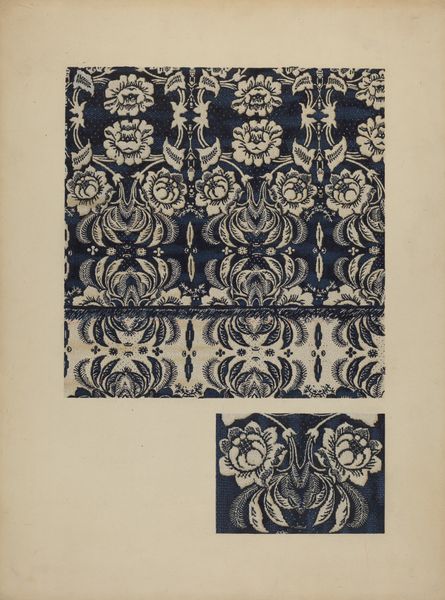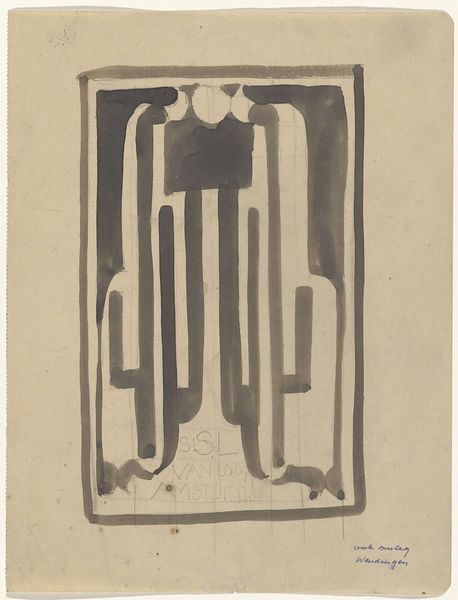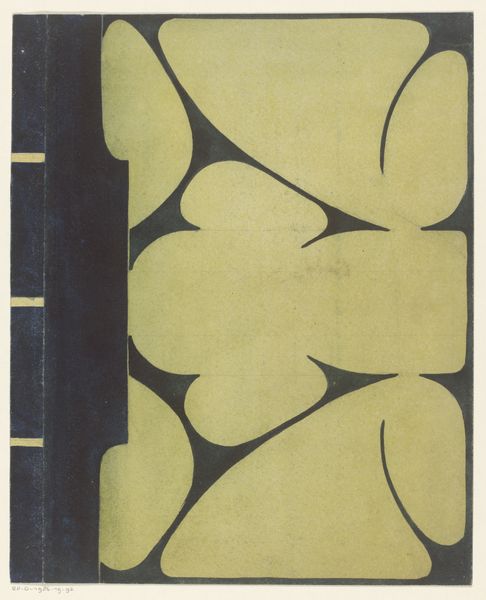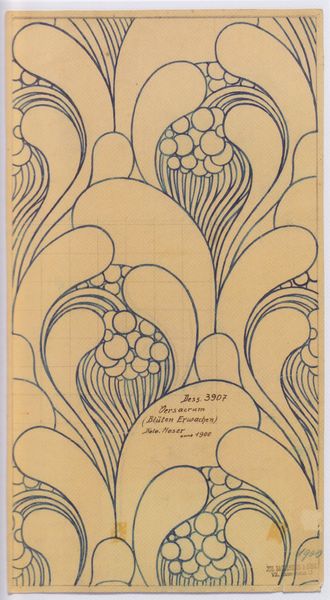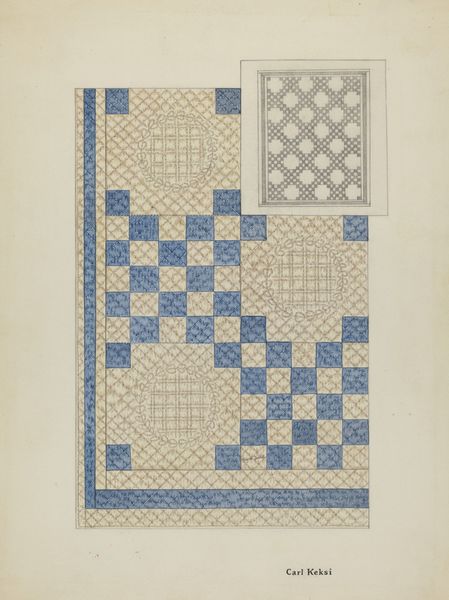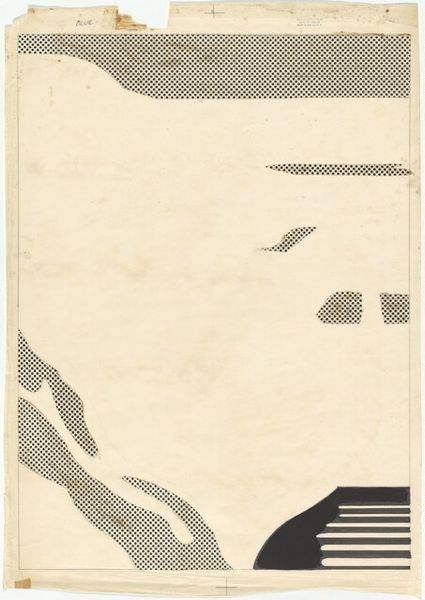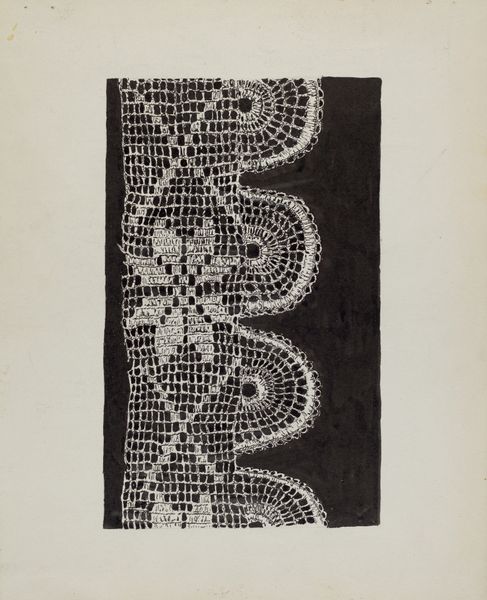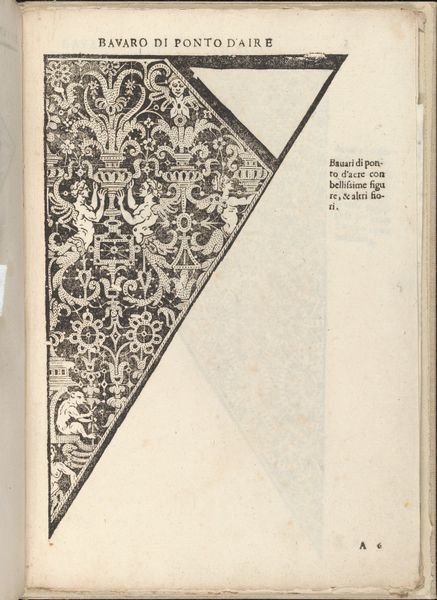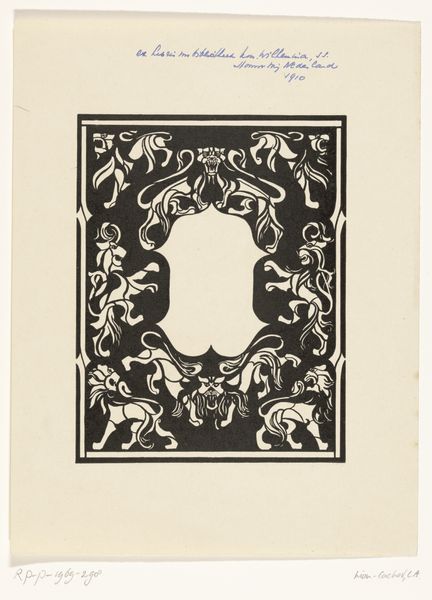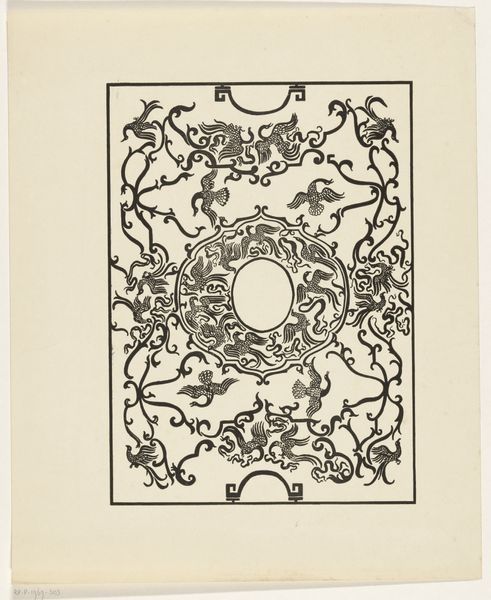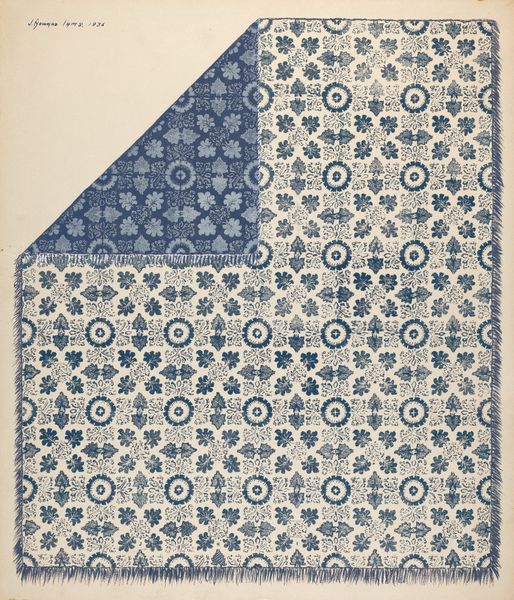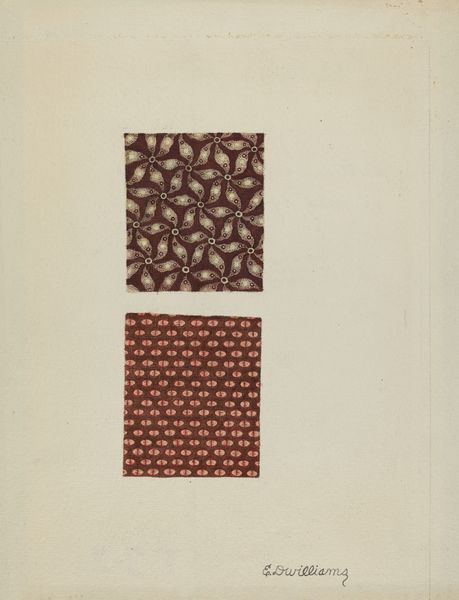
drawing, paper, ink
#
drawing
#
aged paper
#
toned paper
#
art-nouveau
#
paper
#
personal sketchbook
#
ink
#
linocut print
#
geometric
#
abstraction
#
sketchbook drawing
Dimensions: height 227 mm, width 164 mm
Copyright: Rijks Museum: Open Domain
Curator: This drawing is titled "Ornament van schubben," or "Ornament of Scales," by Samuel Jessurun de Mesquita. It’s believed to have been created sometime between 1878 and 1944. Editor: It feels surprisingly modern for something potentially dating back to the late 19th century. The stark geometric shapes and the monochromatic palette are really striking. It almost resembles a textile design. Curator: You’ve hit on a key aspect of Mesquita’s work. He was deeply interested in printmaking and design, often blurring the lines between fine art and applied arts. His linocuts, in particular, demonstrate a fascination with repeating patterns. Editor: So this piece is likely related to that interest in printmaking? The clear lines certainly suggest a transfer process. Looking closer, the type of paper tells a story too. Is this just a sketch then, or a study for a larger piece perhaps intended as a pattern for a textile or perhaps for architectural ornamentation? Curator: Precisely! Mesquita used these sketchbook drawings as explorations, meticulously crafting designs that could be adapted to various formats. Think about the social and economic context; at the turn of the century, there was a burgeoning interest in accessible design. Artists like Mesquita saw opportunities to bring art into everyday life through mass-produced textiles and wallpapers. Editor: It’s fascinating to consider the implications this had on production, as the lines blur between craftsman and artist. There's a deliberate coolness to the aesthetic that could also challenge the more romantic artistic conventions of that time. Curator: Exactly! It questions the value traditionally given to paintings versus these "lesser" reproducible art forms. Even now, it compels us to reflect on those institutional frameworks. Editor: I think the title reinforces that point as well: "ornament." Its inherent relationship with labor and function over art for its own sake offers an interesting avenue for thought, as opposed to more sentimental symbolism. Curator: Absolutely. It’s a testament to the power of revisiting artwork with new critical perspectives. These lines lead to bigger questions about where art truly resides. Editor: And how society values and utilizes different forms of artistic expression throughout history and now. Food for thought!
Comments
No comments
Be the first to comment and join the conversation on the ultimate creative platform.
